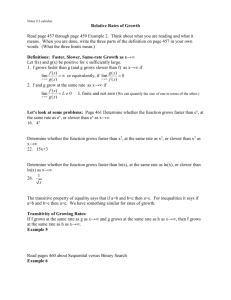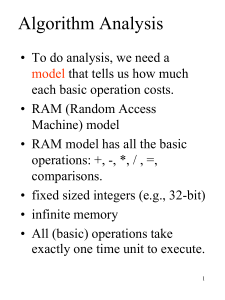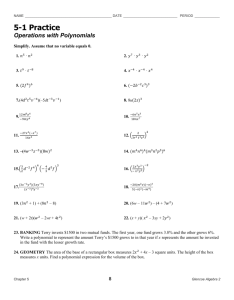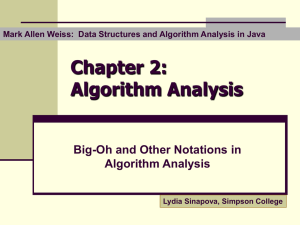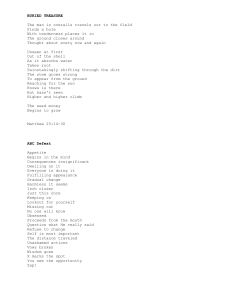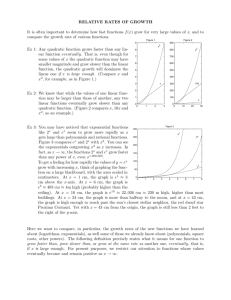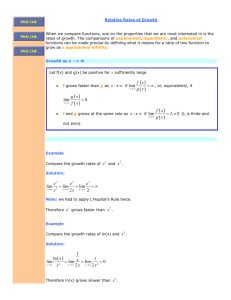8.2 calculus Relative rates of growth
advertisement
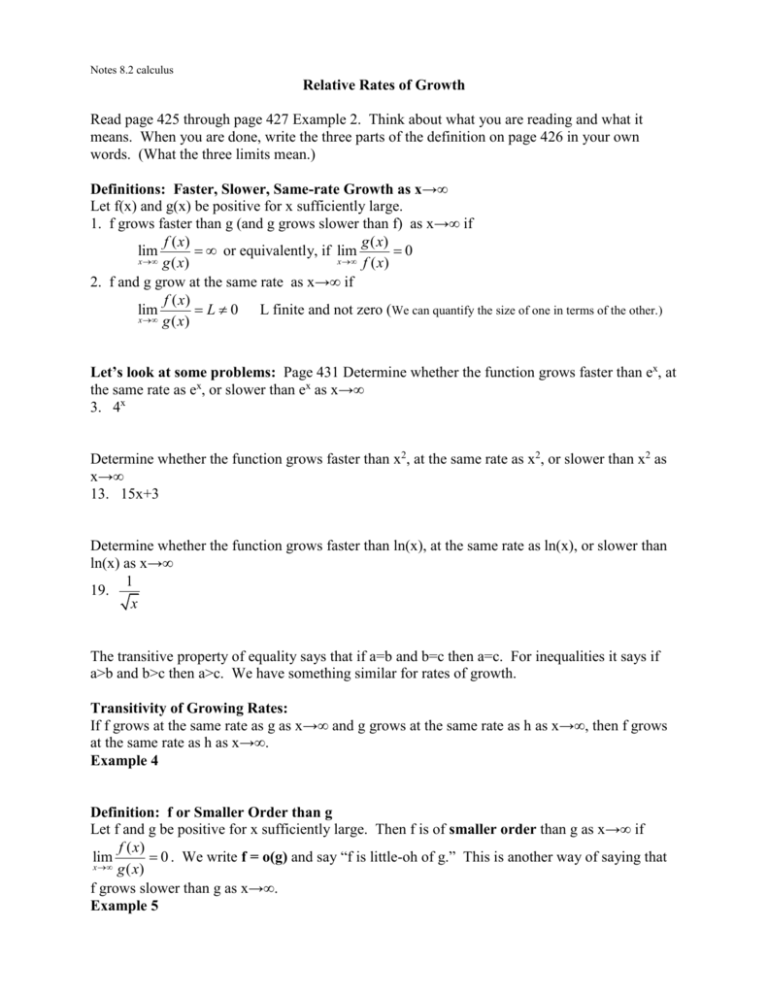
Notes 8.2 calculus Relative Rates of Growth Read page 425 through page 427 Example 2. Think about what you are reading and what it means. When you are done, write the three parts of the definition on page 426 in your own words. (What the three limits mean.) Definitions: Faster, Slower, Same-rate Growth as x→∞ Let f(x) and g(x) be positive for x sufficiently large. 1. f grows faster than g (and g grows slower than f) as x→∞ if f ( x) g ( x) lim or equivalently, if lim 0 x g ( x) x f ( x) 2. f and g grow at the same rate as x→∞ if f ( x) lim L 0 L finite and not zero (We can quantify the size of one in terms of the other.) x g ( x ) Let’s look at some problems: Page 431 Determine whether the function grows faster than ex, at the same rate as ex, or slower than ex as x→∞ 3. 4x Determine whether the function grows faster than x2, at the same rate as x2, or slower than x2 as x→∞ 13. 15x+3 Determine whether the function grows faster than ln(x), at the same rate as ln(x), or slower than ln(x) as x→∞ 1 19. x The transitive property of equality says that if a=b and b=c then a=c. For inequalities it says if a>b and b>c then a>c. We have something similar for rates of growth. Transitivity of Growing Rates: If f grows at the same rate as g as x→∞ and g grows at the same rate as h as x→∞, then f grows at the same rate as h as x→∞. Example 4 Definition: f or Smaller Order than g Let f and g be positive for x sufficiently large. Then f is of smaller order than g as x→∞ if f ( x) lim 0 . We write f = o(g) and say “f is little-oh of g.” This is another way of saying that x g ( x) f grows slower than g as x→∞. Example 5 Definition: f of at Most the Order of g Let f (x) and g(x) be positive for x sufficiently large. Then f is of at most the order of g as x→∞ if there is a positive integer M for which f ( x) M for x sufficiently large. We write f = O(g) and say “f is big-oh of g.” “f is at most g ( x) the order of g” Example 6 Let’s do problem 29. Determine whether the statements are true or false as x→∞. Explain. (a) x = o (x) (b) x = o(x+5) (c) x = O (x+5) (d) x = O(2x) (e) e x o(e2 x ) ( f ) x ln x O( x) ( g ) ln x o(ln 2 x) (h) x 2 5 O( x ) These rules “o” and “O” are kind of just a rearrangement and notation for how fast functions grow. Read pages 430 and 431 about Sequential versus Binary Search Let’s discuss what we just read.
